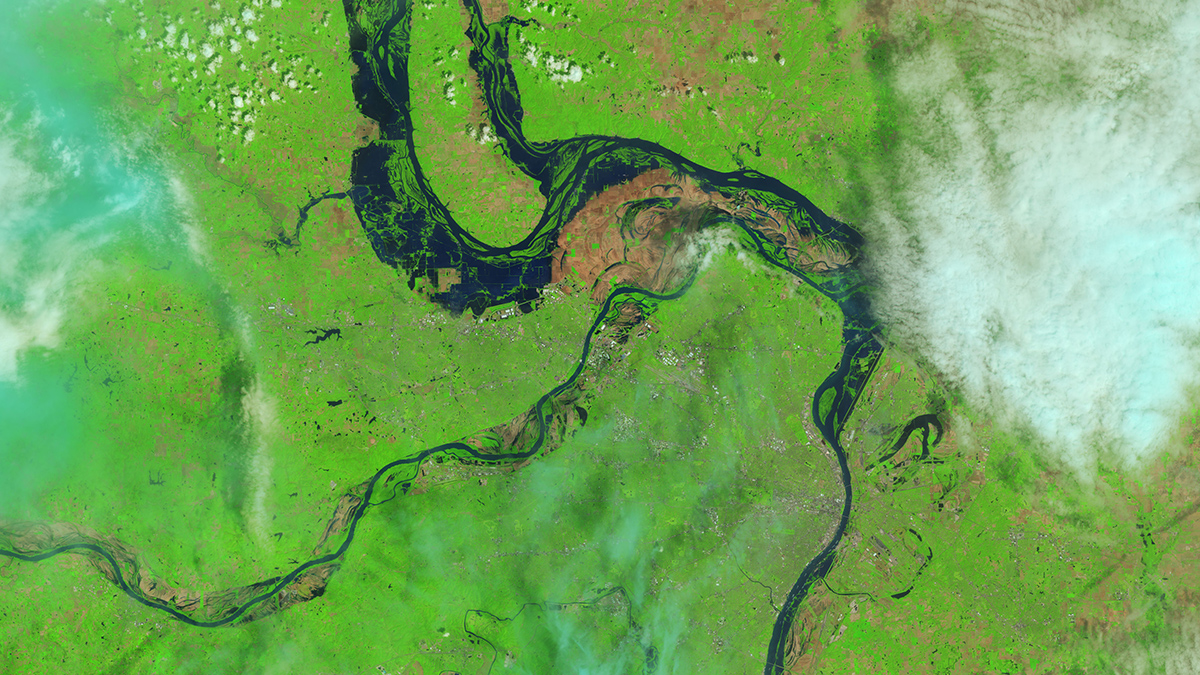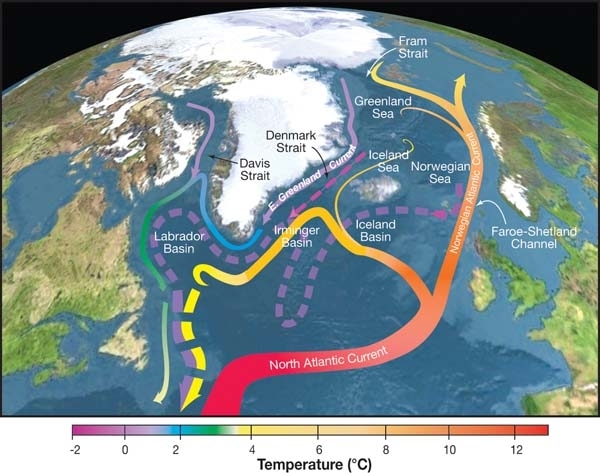A Bellwhether Year
In 2025, legendary global warming pioneer James Hansen issued his final warning. Even as record catastrophes whiplashed vast swathes of the planet with epic floods, wildfires, extreme weather, drought and heat waves, very few paid attention. In the current geopolitical environment, there is little hope for progress. (See mitigation vs adaption here).

The UN has accepted that the 1.5°C (2.7°F) threshold has been permanently breached | Atmospheric Carbon Dioxide levels rose to a new level of 427 PPM as the rate of growth has tripled since 1960 | Record losses: the US marked $101 billion in extreme climate event losses in 2025 | Two more Florida coral species were categorized as extinct in 2025 | The Arab region is heating twice as fast as the rest of the planet as 122°F becomes common. | Global methane emissions continued their upward trend, driven by industrial and agricultural sources | US Electricity emissions rose for the second straight year as coal-fired electricity generation rose 12% and energy demand outpaced renewable growth. The global mean sea-level rise rate since 1900 is the fastest rate over the last four millennia.

Climate Disaster Events
Record heat waves caused massive mortality, especially in Europe and South Asia. Temperatures reached a previously unheard of 122°F in Europe as tens of thousands died.
Record floods and landslides smashed virtually every continent, killing hundreds of thousands and displacing millions. Particularly horrific events took place in Mexico, Pakistan and Texas.
Dubai registered a high temperature of 140°F.
The most powerful Atlantic storm of all time devastated Jamaica with 185 MPH winds.
Apocalyptic wildfires in Los Angeles were bookended with record flooding in December.
A huge chunk of mountainside in the Swiss Alps broke off in mid-May, ice, mud and rock down the mountain, burying the village of Blatten.
The US Environmental Protection Agency continued to remove references to human-caused global warming from its websites.
An Alaska megastorm resulted in mass evacuations and the the largest airlift in Alaska history. 1600 were evacuated.
A massive dirt storm struck Chicago and Central Illinois, a freak weather event driven by drought.
Mosquitos were recorded in Iceland for the first time.

Long Term Trends
Cyclones increasingly display rapid intensification as seas continue to warm.
Global coral bleaching event became the most extensive on record, affecting 84% of reefs worldwide.
The slowdown of the AMOC (Gulf Stream) is accelerating, with dire ramifications for Europe.
Rapid decline of the Greenland ice sheet affects significantly more than sea level rise.
Ocean Heat Content (OHC) in 2025 continues its long-term upward trend, with oceans absorbing over 90% of global warming heat.
Record-low maximum Arctic sea-ice extent was recorded in March 2025,
Global methane emissions continued their upward trend, driven by industrial and agricultural sources, with developing regions fueling growth.
Climate upheaval continues to threaten luxury foods, especially cocoa, wine and coffee. In addition to temperature, excess humidity and unreliable rainfall are factors.
Rapid sea level rise now actively threatens large coastal cities globally, including China, New York, Manilla, Jakarta, Miami and the OBX.

Tipping Points/Feedback
Atmospheric water vapor: Warmer air holds more water vapor, a GHG which amplifies warming, which increases water vapor. Repeat.
Polar ice reflectivity decline (albedo) effect. Less ice bounces less heat back into space, heating ocean waters faster, which melts more ice. Repeat.
Permafrost carbon feedback: as frozen soils thaw CO₂ and methane from long-stored organic matter causing more warming, causing more thawing. Repeat.
Forest dieback from heat and drought: Fewer trees means less CO₂ absorbed; fires release CO₂ increasing atmospheric levels increasing warming. Repeat
West Antarctica Ice shelves are falling apart at unprecedented rates. These formations “hold back” trillions of tons of land ice on the southern continent, enough to raise sea levels several meters.
Three causes of global sea level rise

Melting land ice packs changes ocean chemistry
25% The massive Greenland ice cap is shrinking an average of 30 million tons an hour – which is 20% more than was previously thought. This additional source of freshwater pouring into the North Atlantic contributes to the slowing of the Atlantic meridional overturning circulation (AMOC), a dire state of affairs for Europe.
Ice loss from Antarctica continues to accelerate over and is now estimated at 150 Gigatons per years. This is a sevenfold increase since the 80’s and adds an additional .5 mm per year to sea levels.
Globally, mountain glaciers have been losing mass rapidly and contribute around 0.2 to 0.4 mm per year to sea-level rise.

Groundwater depletion and transfer to oceans
25% Groundwater depletion from irrigation and other human activities is a major though often overlooked, contributor to sea level rise, adding new freshwater to oceans that was previously stored on land. A relatively recent discover, this category of water transfer to the oceans may now equal or exceed melting glaciers and ice sheets. This human activity is causing a global shift in the water cycle, which is virtually never a good thing for humans.

Thermal expansion is more significant than melting ice
50% About half of current sea level rise is attributable to ocean thermal expansion. When seawater warms, it expands, and takes up more volume, significantly contributing to sea-level rise. as oceans absorb over 90% of Earth’s trapped heat from greenhouse gases, causing water molecules to spread out, leading to rising coastal waters. This process accounts for about half of the global sea-level rise, with warmer temperatures increasing the water’s volume, impacting coastal areas and ecosystems worldwide
The ice goeth, man

Glacial Lake Outburst Floods mountain villages
A glacial lake outburst flood (GLOF) takes place when water stored in a lake that formed from melting glacier ice suddenly bursts through its natural dam (often made of loose moraine sediments or ice), violently releasing unthinkable volumes of water and debris downstream. These cataclysmic floods are increasing in frequency in many alpine ecosystems around the planet.

Mountainsides collapse as frozen ice “glue” thaws
A huge chunk of mountain in the Swiss Alps broke off in mid-May, dumping a deadly mash of ice, mud and rock down the mountain, burying most the village of Blatten. This increasingly common phenomenon is what happens when the ice particles that hole mountains begins to melt. Permafrost in Alpine locations and also in the Arctic is no longer so “perma,” causing accelerated destabilization of tundra and mountainsides.

Permafrost thaw unleashes shocking consequences
The rapid thaw of permafrost is one of the most powerful feedbacks, linked with several obvious and not so obvious effects on the global climate. The most alarming scenario is the release of gigatons of Methane (CH4) into the atmosphere from beneath the once frozen surface. Methane is far more powerful than CO2 (Carbon Dioxide).
Notable Events

Massive Chicago dirt storm was a toxic event
A massive wall of dust and dirt particles enshrouded the city of Chicago in mid-May, causing ground stops at O’Hare and Midway and bringing the region of 10 million residents to a halt. Driven by 60 MPH winds, the violent storm brought near-zero visibility to highways and wrecked crops and agricultural infrastructure.

Lethal Glacial Outburst Flood devastated Nepal
An sudden glacial outburst flood in Rasuwagadhi, Nepal swept away the Nepal–China Friendship Bridge, hydropower installations, and cross-border trade goods; several deaths and missing persons were reported. It was one of three that occurred in the region.
Himalayan glaciers are shrinking rapidly due to warming — increasing lake formation and water volumes behind natural dams

Climate whiplash in Los Angeles
January fires caused significant direct deaths and hundreds more from poor air quality, with over $60 billion in damages, fueled by climate change. As the year ended, the same area was inundated by flash flooding.




































 Moscow deluge
Moscow deluge






